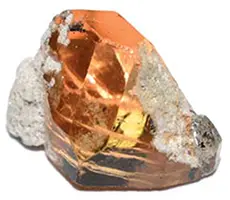
Uncovering the Origins
Topaz is a transparent silicate mineral of aluminum and fluorine, notable for its hardness (8 on the Mohs scale). It is commonly seen as a golden-yellow stone but also appears in brown, blue, pink, green, and colorless forms. Topaz deposits are found in various locations, including the United States, Mexico, Pakistan, Sri Lanka, and Australia.
Historical Significance and Lore
Historically, the term ‘topaz’, derived from the Greek ‘Topazios’, was initially used for green gemstones. Marbodus of Rennes clarified topaz’s yellow color in the 11th century. Saint Hildegard of Bingen also referenced topaz, notably its healing properties when soaked in wine.
Healing Uses
Topaz is recognized for its healing properties. It aids digestion, stimulates metabolism, and combats eating disorders. Blue topaz, in particular, is beneficial for throat and vocal cord issues.
Magical Uses
Topaz supports practices like affirmation, manifestation, and visualization. It’s used to manifest desires into reality and, as an amulet, alleviates sadness and mood swings.
Feng Shui Applications
In Feng Shui, topaz is known for its vibrant energy that dispels negativity and fosters love and joy. It’s most effective in the center of a space or the Health/Well-Being sector of a home.
Personal and Spiritual Growth
As a birthstone for November, topaz is a empathetic stone that encourages truth and forgiveness. Placed on the throat or third eye, it enhances communication. Blue topaz is used in meditation for accessing the higher self, while pink topaz aids in breaking old patterns.
